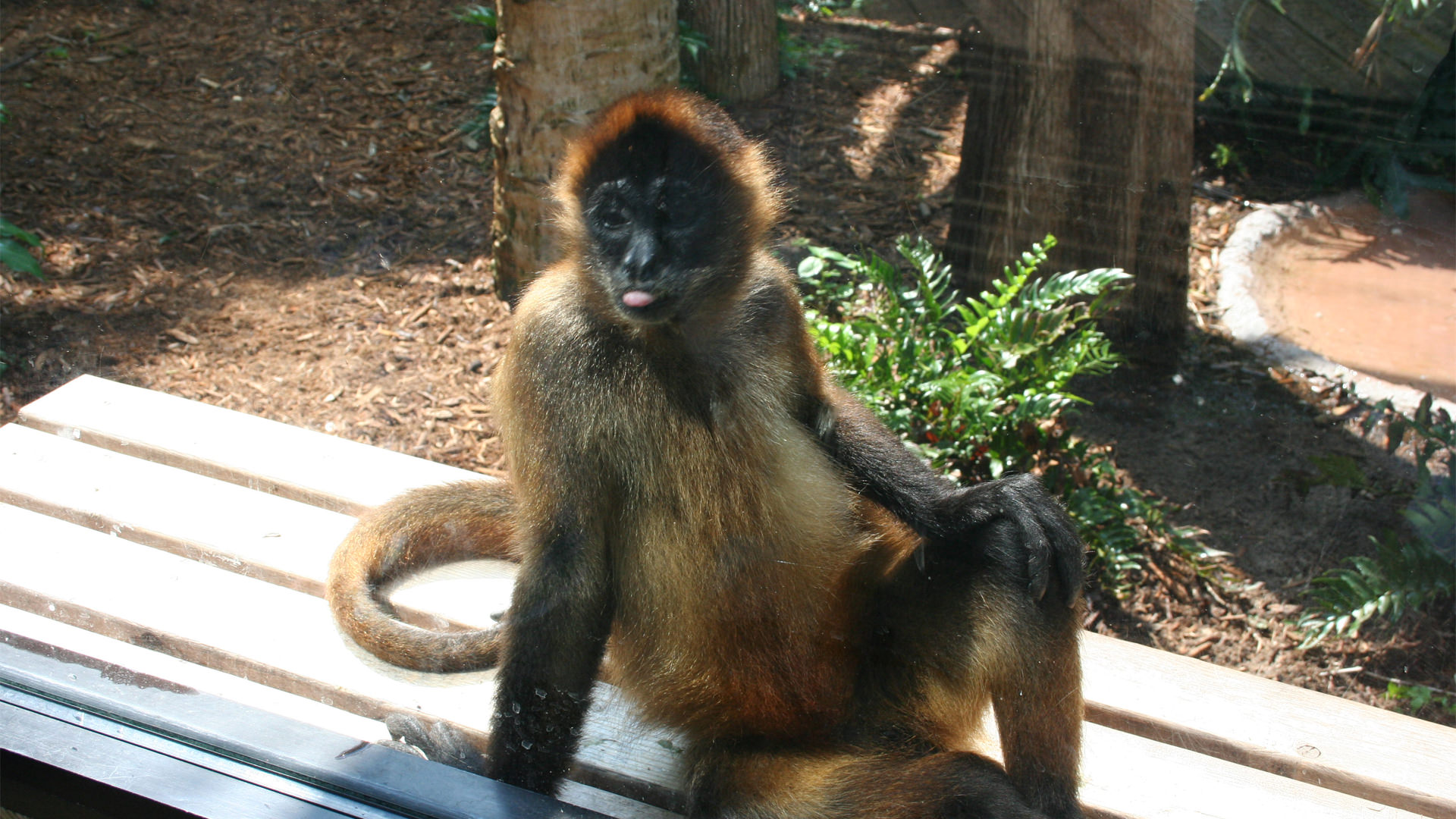
The black-handed spider monkey has either red, black or brown fur with hook-like hands and a prehensile tail. They can use their prehensile tail, which is longer than their bodies, to swing and hang from, giving them a spider-like appearance.
Black-handed spider monkeys live in large groups of around 30 individuals, although groups of up to 100 have been reported. The large group will split into smaller subgroups to forage for food. Their long slender limbs, hook-like hands and prehensile tail make foraging through the trees possible. Their tail is used as a fifth limb for activities such as hanging, swinging, picking up fruit, and throwing objects- solely with this fifth limb! The diet of these monkeys consists mainly of fruit, but they will occasionally eat leaves, flowers, nuts, seeds, insects, and arachnids. When a black-handed spider monkey is threatened, it will emit a “barking” sound in an attempt to ward off predators.

Our male spider monkey is one of the few animals here at the Zoo who will recognize his keepers even when they are not in uniform.

Kiara
Spider monkeys lack opposable thumbs, having only four fingers hand on each hand. However, they make up for it with a fifth limb- their tail!
Central and South America
Tropical and Subtropical forests
6–9 kg | 30–60 cm body length
Fruit, leaves, flowers, nuts, seeds, insects, arachnids, eggs
Humans, Jaguars, Pumas
Warning calls and climbing ability
Gives birth to one baby every two to four years
Endangered
Up to 25 years
